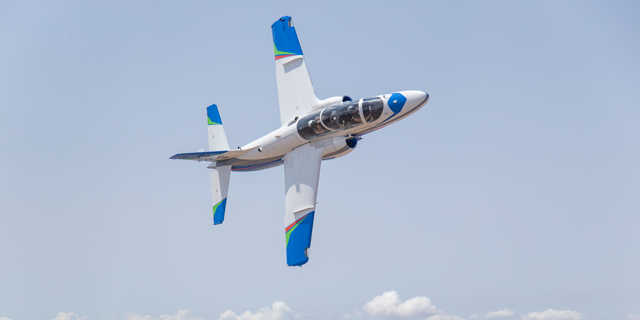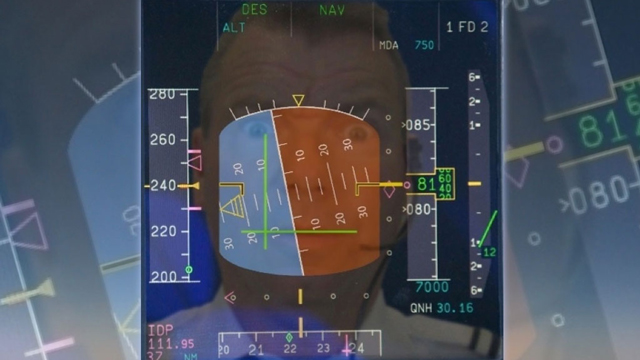Resilience, defined as the capacity to withstand or to recover quickly from difficulties, allows pilots to handle unforeseen challenges with composure, adaptability, and effectiveness. Yet, like a rubber band stretched too far, there exists a critical point where even the most robust resilience can fray under pressure. Recognizing, reinforcing and stretching this threshold is crucial for every pilot, both individually and within a crew context, as various factors and situations can significantly diminish pilot resilience, affecting the ability to perform effectively under pressure. Upset Prevention and Recovery Training (UPRT) is an effective tool to reinforce resilience by stretching a pilot beyond regular pilot training and into a more advanced realm of safety, preparedness and excellence.

The Essence of Pilot Resilience
Resilience in aviation is multifaceted, combining the mental agility to handle stress and unforeseen events with the technical prowess that defines skilled aviators. Many concrete definitions anchor resilience in specific attributes, with two standing out for pilots: confidence, the belief in one’s abilities and decision-making; and competence, the mastery of necessary skills and knowledge. Thus, experience and skill contribute to both of these pillars of resiliency. However, factors to do with training, crew management and circumstances can diminish resilience in the face of an unexpected in-flight situation.
Challenges to Resilience

- Fatigue: One of the most significant challenges to pilot resilience is fatigue (Wingelaar-Jagt et al., 2021), which can impair cognitive function, decision-making abilities, and reaction times. The demanding schedules, long-haul flights across time zones, and the need to remain alert for extended periods can take a toll on pilots, reducing their mental sharpness and capacity to handle unexpected situations.
- Human Factors Such as Startle and Surprise: The startle factor can profoundly impact pilot resilience by triggering a sudden, intense emotional and physiological response that can momentarily overwhelm a pilot’s ability to think clearly and react effectively. This unexpected jolt challenges a pilot’s capacity to implement critical decision-making skills rapidly under pressure.
- Stress and Mental Health Issues: The high-stakes nature of aviation can induce considerable stress, which, if not managed properly, may lead to mental health issues such as anxiety or depression. Such conditions can erode a pilot’s confidence and competence, impacting their resilience and overall performance.
- Lack of Experience or Inadequate Training: Inexperience or gaps in training can leave pilots ill-prepared for the complexities of modern flight operations. Without a comprehensive understanding of aircraft systems, aerodynamics, and recovery techniques, pilots may lack the competence to navigate challenging situations, undermining their confidence and resilience.
- Poor Crew Resource Management (CRM): Within a crew, resilience is heavily reliant on effective communication, leadership, and teamwork. Poor CRM can lead to misunderstandings, misjudgments, and a breakdown in coordination during critical moments, diminishing the crew’s collective resilience.
- Technological Overreliance: Excessive dependence on automation and advanced flight systems can lead to skill atrophy, where pilots become less proficient in manual flying and problem-solving. This overreliance can severely impact a pilot’s ability to respond competently in situations where automation fails or is not applicable.
- Personal Life Stressors: Issues outside of work, such as family concerns, financial problems, or significant life changes, can distract pilots and impair their focus and performance, weakening their resilience both in and out of the cockpit.
UPRT: Reinforcing Resilience to Prevent the Snap
Upset Prevention and Recovery Training (UPRT) is designed to counteract these factors by building robust resilience through confidence and competence. By addressing the technical and psychological aspects of flying, UPRT equips pilots with the skills necessary to manage and recover from upsets, while also fostering a mindset geared towards resilience.
- Combatting Fatigue and Stress: UPRT emphasizes the management of physiological and psychological stressors, teaching pilots strategies to maintain alertness and manage fatigue. Simulated scenarios help pilots develop coping mechanisms for stress, enhancing their ability to remain composed and make clear decisions under pressure.
- Human Factors: The startle or surprise effect has played a significant role in Loss of Control In-flight (LOC-I) incidents and accidents, primarily because upsets are unexpected and unintentional, negatively affecting both recognition and recovery efforts. Properly executed UPRT addresses these and other human factors effectively, even in the training environment, by employing meticulously designed tactics and scenarios (FAA, 2017). By imparting a standardized recovery technique applicable across diverse situations and instilling a deep understanding of aerodynamics along with on-aircraft (ICAO, 2014) practice of appropriate pilot responses, UPRT significantly enhances pilots’ resilience, preparing them to navigate even the most daunting circumstances with confidence.
- Bridging Training Gaps: Because regular pilot training does not include the extended flight envelope, even seasoned pilots are often unable to quickly apply the often counterintuitive inputs to prevent or recover from an unexpected aircraft upset. Through hands-on experience and scenario-based learning, effectively delivered UPRT (Ransbury, 2015) addresses these training gaps, increasing pilot competence and confidence to recognize or recover from an impending in-flight situation.
- Improving Crew Resource Management: UPRT fosters effective communication, leadership, and teamwork skills, which are vital for crew resilience. Training scenarios that require crew coordination in upset recovery not only improve technical proficiency but also enhance the crew’s ability to function as a cohesive, resilient unit.
- Mitigating Technological Overreliance: By focusing on manual flying skills and fundamental aerodynamics, UPRT reduces overreliance on technology, encouraging pilots to maintain and refine their flying skills. This ensures that pilots are prepared to take decisive action when automation cannot assist, bolstering their resilience.
A Call to Action
While various factors can diminish pilot resilience, targeted strategies like Upset Prevention and Recovery Training (UPRT) offer effective means to combat these challenges. By enhancing both individual and crew resilience through a combination of skill development and psychological preparedness, UPRT ensures that pilots are equipped to navigate the complexities of modern aviation with confidence and competence. As the industry continues to evolve, fostering resilience through comprehensive training and support will remain paramount in maintaining the safety and integrity of flight operations. UPRT is our ally in our journey to continually refine aviation safety, offering a pathway to not just meet the standards of resilience but to redefine them.
*Dive deeper into a technical analysis of pilot resilience against LOC-I: https://www.linkedin.com/pulse/forging-pilot-resilience-against-loss-control-paul-ransbury/
References:
1.Wingelaar-Jagt, Y. Q., Wingelaar, T. T., Riedel, W. J., & Ramaekers, J. G. (2021a, August 6). Fatigue in aviation: Safety Risks, preventive strategies and pharmacological interventions. Frontiers. https://www.frontiersin.org/articles/10.3389/fphys.2021.712628/full
2. Advisory Circular 120-111. Federal Aviation Administration. (2015, April 4). https://www.faa.gov/documentLibrary/media/Advisory_Circular/AC_120-111.pdf
3. International Civil Aviation Organization. (2014). Manual on Aeroplane Upset Prevention and Recovery Training (Doc 10011). https://www.icao.int/Meetings/LOCI/Documents/10011_draft_en.pdf
4. Ransbury, P. (2015). Every Pilot In Control Solution Standard (EPIC-S2): The benchmark for advanced UPRT implementation. Aviation Performance Solutions. https://apstraining.com/epic-s2/




Comments: